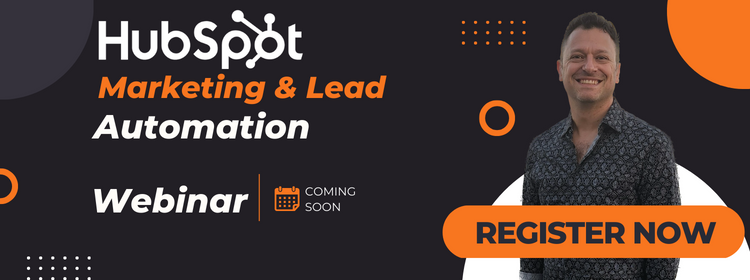Services List
In this post, we survey the importance of lead generation to the success of every business, using inbound marketing to attract new customers and increase conversion rates.

Covered in this article
A Fail-Safe Formula
Optimise your website
Use social media
Offer incentives
Host webinars
Leverage email marketing
A Fail-Safe Formula
Inbound marketing is a fail-safe formula to forge the flourishing of your business by assembling deep, durable connections with leads, prospects, conversions and customers. It’s a dead-cert value-added tactic of giving them the green light to consummate their aspirations at all stages of their buyer journey with you as their pilot light. The three applications of the inbound methodology are:
- Attract: Captivating the target audience with useful content and dialogue that positions you as a trusted advisor they have the confidence to consult.
- Engage: Deliver the vision and resolutions which line up with their pain points and objectives, increasing the likelihood of them becoming your customers.
- Delight: Supply a steady stream of support and help to delight customers with the triumph of their purchase.
Optimise your website
Start by defining your buyer personas, representations of your target customer with their characteristics, demographics and goals so your marketing content aligns with their distinctive voices and interests. Segment content into the awareness, evaluation and decision-making stages to cover all knowledge phases of your products and services.
Populate your website with content magnets (videos, blogs, podcasts) across all your marketing channels. Here, lead forms/fields are a way of removing obstacles to visitors sharing their contact data so you can communicate with them, in exchange for access to low to high-value content.
Smart forms feature a mechanism to increase the personalisation of communications by getting visitors to submit additional form fields on every visit. Blogs are the best go-tos for the awareness phase, letting you surge visitor numbers and SEO keyword rankings, especially with calls to action which prompt and engage leads to take some kind of action.
Gated downloads (research info, say) direct leads to your preferably plain English landing pages, as do your social channels, using CTAs to promote the content which has the best chance of garnering visitor contact details. Interactive marketing content (surveys, quizzes, checklists, self-assessment tools and free trials) is married to lead generation in providing leads with interactive experiences and value deliverables.
Chatbots, provided they don’t malfunction and meltdown, automate answering FAQs using AI based on visitors’ words and phrases, saving company resources and generating lead engagement. Optimise your website for all omnichannel platforms and mobile responsiveness, select keyword-rich titles and blog meta descriptions, minimise form submission asks, provide easy user navigation, boost site speed, and justify positive social proof (customer testimonials).
Use social media
Strategically successful social media marketing content connects each post to your strategy and drives content creation to your target audience. Socials position brands as present, relevant and if perceived as authentic, imparting authority. Facebook, TikTok, YouTube, Twitter and Instagram et al are valuable demographic and psychographic data sources, so it makes business sense to use them for lead generation and revenue optimisation. In essence, social media is snackable, mobile-friendly content for warming leads. Here’s how:
Your target audience is already glued to their social pages, so socials are a great indication of where they get their information, helping you understand the precise platforms and outlets your company should be present on. Social media positions your entity as an industry thought leader, and hot-button topic posts drive engagement. Socials push content to the audience already engaged with your profile, so cross-promotion of your latest blog post, e-book, podcast or meme leverages influencer culture to maximise brand exposure.
Post regularity and relevance trump sharing content for the sake of it, and establishing text tone, the topic scope, and arresting imagery from the offset enhances intimacy. Snappy but upbeat reactions to comments impart a friendly, sassy brand tone to convert reluctant or curious leads. Socials work as research tools, giving you an immediate sense of what your audience thinks about your new brand or service. Also, paid social advertising delivers your brand to your top audience in no time, prompting them to click through to your website and share their contact data.
Social media measurables include the number of scrollers/viewers the post reached, the ratio of engagement to reach, the website traffic generated and the leads converted.

Offer incentives
Marketing incentives are prizes and recompenses delivered by a company to stimulate conversions from its current and potential customer base. Remember to simplify incentive guidelines, remind customers of incentive expiry dates, connect incentives to your brand where possible, and know which rewards motivate your audience the most. The five types of marketing intent incentives are:
1. Increasing brand awareness
By drawing awareness to your brand, potential leads find out who you are, what you can deliver and all about your value proposition to edge them closer in becoming customers. Strategies include free samples, free products for a limited time, contests, branded apparel, swag and items.
2. Gaining leads
Once awareness is established, turn attention to leads. Lead generation incentives to motivate leads into supplying their contact data comprise information (ebooks, podcasts and blogs related to your brand), coupons and discounts in exchange for email addresses, and free product trials and contests.
3. Purchase motivations
Sweeten the deal with fence-sitting leads by offering them purchase incentives to increase purchase rates, either by cutting purchase costs or adding purchase value through bonuses. These contain “buy one, get one free” offers, a no-charge bonus item with each purchase, free upgrades with each buy, coupons, sales and discounts, and sweepstakes with entries per purchase.
4. Enhancing retention rates
Repeat purchases don’t have customer acquisition rate expenses factored in, and a customer's lifetime value increases the more they buy. Decreasing churn is served with store credits, loyalty points, discounts, feature and plan upgrades, and contests.
5. Referral motivation
Peer trust beats branded messaging every time. Referrals between friends regarding your company make for customer conversion and loyalty. And double-sided referral incentives (the referring friend receives a reward for their friend’s first purchase) sweeten the customer acquisition pot. These encompass discounts, credits, cash rewards and branded merch.
Host webinars
Webinars require time and resource investment to reap their rewards: ramping up lead generation and propelling conversion. Here are further benefits:
Lead captureThe advantage of attendees filling in a form to register for a webinar you’re hosting is that you don’t come on too strong in getting their details, you can measure your webinar’s ROI, and establish a relationship with the registrant after the webinar.
Prospect engagementQ&As, polls and engagements between host and viewers is an opportunity to elicit additional information from prospects not furnished by traditional forms. Personalised but remote interaction can lead to sales conversations.
Cost efficiencyThe costs of transport and hosting an on-premise seminar probably outweigh the price of a hosting platform and the time to prepare and follow up. Hosting webinars remotely extends the global reach of attendees and guest speakers, as well as forging brand awareness and the catch of beneficial relationships.
Information quantity conveyanceAn ideally 90-minute webinar lets you get the nuances of a topic across more easily than an ebook or blog post. Verbally conveying ideas lets you go into greater depth without losing the audience, and if you do, they can always ask you to clarify a point.
Increased engagementTuning in, relaxing, listening and watching is more engaging and less labour-intensive than reading lengthy text and gives busy professionals a chance to unwind with a change of pace. Successful and engaging webinars are about what your brand, product and service can do for the people watching – not about blowing your own personal horn.
Getting hyper-specific about the audienceWith pre-marketing your webinar, hyper-niche your presentation by creating different versions for different market segments, and delivering the product/service value quickly to keep attendees watching and listening. Keeping the narrative lean and mean focuses attention, and minimises the use of slides. Conclude with a CTA, and keep repurposing and republishing your webinar with timely updates and hot takes to further the impact of your brand.
Leverage email marketing
Inbound email marketing is a method of organically pulling in potential conversions with permission-based, high-quality content that attracts inbound traffic. Generate interest organically by locating ways to link the information leads and customers are searching for to your brand, product and service.
Email strategies take in:
EngagementEmail as a vehicle for reinforcing meaningful prospect interaction is fueled by bracing the connection, going directly to the prospect, and providing enough scope to drive your message home to them. Use of imagery, videos and voice recordings is a bonus, and two-way communication is facilitated by prospects responding with questions and solution requests to problems.
RemindersEmails can direct subscribers to the new blog, video, social and podcast posts, eliciting comments and shares across all platforms. The larger the contact list, the better your chances to monetise the attention and accelerate ROI on ad revenue.
CTAsEmails are action-orientated CTAs themselves. For example, notifying subscribers of product launches and redirecting them to your website to place orders. Or, announcing imminent webinars or events and inviting subscribers to sign up for them.
Email strategy methods cover:
Prospects sharing email addressesMinimise the fuss over pretty-please asking leads to share their contact details by luring them to your landing page via SEO manoeuvres or pay-per-click ads, and provide them with value (promised content, blog content upgrades or offers) in exchange for their emails.
Audience segmentationPersonalise the content of your CTA emails by receiving additional data with the signup form, such as addresses or occupations. Refine your segmentation criteria with open and clickthrough rates to maximise email customisation, and get your CTAs to bounce leads between their inbox and your website.
Activating the lead funnelNurture leads until they become customers by reminding them what a boon your business is to their personal and professional lives. For example, follow up inbound-based attention generated by organic content with outbound promotions.
Use all these techniques, and lead generation should be a cinch.




